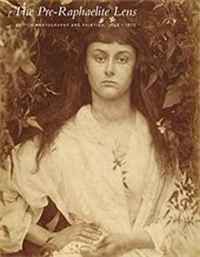As photography steadily gained a foothold in the 1840s, a group of British painters calling themselves the Pre-Raphaelites came of age. Answering John Ruskin"s call to study nature, "rejecting nothing, selecting nothing, and scorning nothing," these young painters were also spurred on by the possibilities of the new medium (introduced in 1839), particularly its ability to capture every nuance, every detail. And yet, the Pre-Raphaelites" debt to photography has barely been acknowledged. From photography, painters learned to see anew: adapting such radical qualities as abrupt cropping, planar recession, and a lack of modulation between forms, painters made their art modern, sometimes shockingly so. Photographers in turn looked to Pre-Raphaelite visual strategies and subject matter - mined from literature, history, religion - to secure," as Julia Margaret Cameron wrote, "the character and uses of High Art." These artists developed a shared vocabulary - featuring light and minute detail as an emblem of visual truth - which helped launch realism as the century"s dominant visual mode. "Exactness," a critic affirmed in 1856, "is the tendency of the age." This volume explores the rich dialogue between photography and painting through the themes of landscape, portraiture, literary and historical narratives and modern-life subjects. These artists - from photographers Lewis Carroll, Julia Margaret Cameron, Roger Fenton, Henry Peach Robinson and Oscar Gustave Rejlander, to such painters as John Everett Millais, William Holman Hunt, Dante Gabriel Rossetti and John William Inchbold - not only had much in common, but also upended traditional approaches to making pictures. Это и многое другое вы найдете в книге The Pre-Raphaelite Lens (Diane Waggoner, Tim Barringer, Joanne Lukitsh, Jennifer L. Roberts, Britt Salvesen)
The Pre-Raphaelite Lens Britt Salvesen, Diane Waggoner, Tim Barringer, Joanne Lukitsh, Jennifer L. Roberts
Подробная информация о книге «The Pre-Raphaelite Lens Britt Salvesen, Diane Waggoner, Tim Barringer, Joanne Lukitsh, Jennifer L. Roberts». Сайт не предоставляет возможности читать онлайн или скачать бесплатно книгу «The Pre-Raphaelite Lens Britt Salvesen, Diane Waggoner, Tim Barringer, Joanne Lukitsh, Jennifer L. Roberts»
